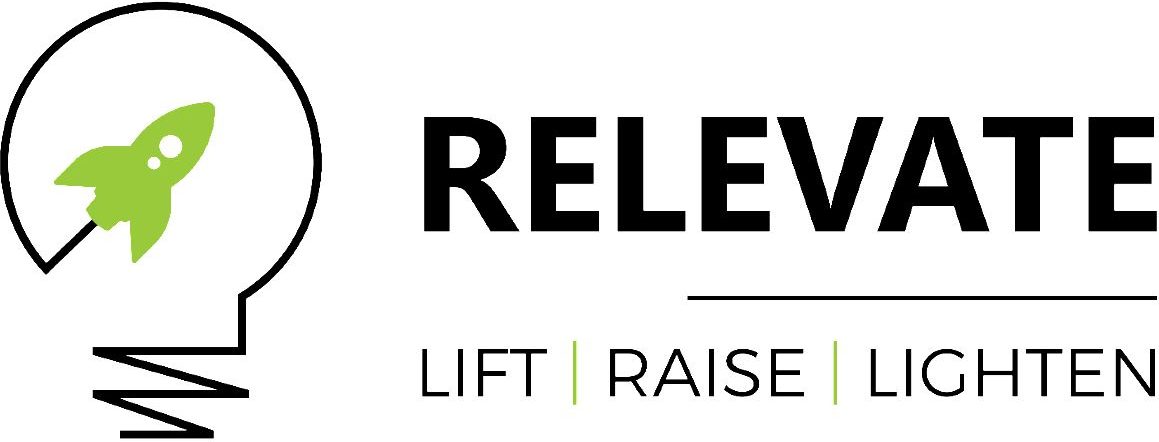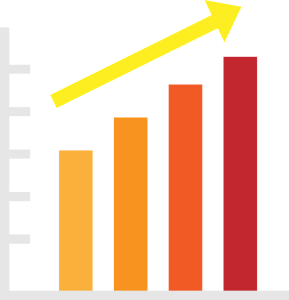Concise, powerful communication is more crucial than ever in the sales prospecting world.
DMR Business Statistics reports that the average person sends and receives 121 emails per day; I would imagine that number increases as one rises in rank and responsibility within an organisation.
Start Your Download Right Now: 25 Successful Email Templates for Marketing & Sales
Emails are a common form of communication, so it’s important that the messages you send are concise, informative, and useful. Getting your email message read is a difficult task.
Prospects are too busy to read lengthy, inane emails that use only buzzwords. Check that your emails don’t scream “Sales!” Always put yourself in the shoes of your prospect and communicate value in a way that shows you care. When composing an email to a potential client, remember these points:
Emailing a Potential Client: The Proper Way to Do It
Check the subject line carefully.
Please state your name and introduce yourself.
Think about the customer’s current position in the purchasing process.
Focus on their problems and solve them for them.
Promote the benefits you can provide.
First, give attention to the subject line.
Convince&Convert reports that 35% of people will read an email just because of the subject line. Aside from the subject line, the remaining ones take into account various other factors. It’s safe to assume that nobody will open your email and actually read what you sent them unless they are interested enough to click the subject line.
This is meant to pique their interest. Make them want to continue reading and click on the link.
In order to compose effective email subject lines, consider the following:
- Individualize your approach.
- Raise an interesting query.
- Make your sentences short and to the point.
- Take advantage of a lack of availability and an air of exclusivity.
Check out our article on the top subject lines for sales emails to see some of these strategies in action.
Secondly, please introduce yourself.
You’ll have more success if they know, like, and trust you already, but everyone has to start somewhere.
If this is the first time you’ve communicated with this person, it’s important to do so in a friendly and genuine way. At heart, you should be communicating who you are and why they should pay attention to you. Furthermore, making it sound like it’s directed at them can help frame the discussion in a positive light. Here’s an example of a sales email introduction you might use:
To whom it may concern, my name is [Name], and I am writing because…
The following phrase can be used as either a question to initiate conversation or a powerful one-liner to establish credibility and trust.
Third, take into account where they are in the buying process.
If they haven’t settled on a specific solution, it would be futile to promote yourself as a provider. Here’s where customer relationship management data and how they interact with your site can come in handy.
A customer’s willingness to answer more targeted questions in the consideration and decision stages increases the likelihood that they will make a purchase. Their behaviour indicates they are not yet ready to make a decision, so it may be helpful to take a more informational and educational approach if they have only opted in to awareness stage content.
In other words, focus on their difficulties and offer solutions.
A sales email is something no one wants to read. They need guidance in overcoming their difficulties. Keeping this in mind will help you connect with them on a deeper level and provide more meaningful assistance.
For instance, I know that you organise many campus-wide activities each year. I know how challenging it can be to capture the attention of your class. My job entails publicising college recruitment events for companies like Facebook and Google.
Promote your unique selling proposition.
Say so, and back it up with evidence from the community if no one else in your field does it the way you do. An interesting statistic, case study, or testimonial can all serve this purpose. To maximise the effectiveness of this strategy, highlight the experiences of customers who are similar to the ones you’re targeting. This enables them to identify with your client’s positive experience and reason that if it worked for them, it can work for them too.
- Use This Valuable Library Catalogue for Free!
- Twenty-Five Free Business Email Layouts
- All you have to do is fill out the form below to get your hands on the templates.
- Formalization of an Open Structure
- Indicator/Close Button
Drawn with a sketching tool. - Hi 👋 How do I address you? Given Name
- Significance of the Surname
- Hello, n/a I need to know your email address, where can I find you? Adresse électronique
- Yes, and what’s your number?
- Dialing the Phone Number
- Please tell me your business’s name and URL.
- Company
- Website
What is the staff size?
1, Obtain Your No-Cost Samples
Template for an Introductory Business Letter to Potential Customers
If you’re looking for prospecting ideas, here are a few to get you started.
A few disclaimers:
These are more broadly applicable across industries and company sizes than the emails we typically send. (I’ve provided some sample texts in various styles for your reference.)
You can be more imaginative than the below-listed email examples, but please exercise caution. If you try to be too friendly or cute, it may backfire.
How to Get That First Meeting: Write a Warm Email to Prospective Customers
The purpose of this email is to introduce your business. The trick is to establish your expertise right away and to request the meeting early on.
What’s up, [Prospect]?
In association with [your name here] (the company). We’re a Y firm that helps businesses with [here, list a common problem you solve for customers] in [here, list one of your primary industries or an industry in which you have experience].
I was wondering if we could have a preliminary conversation to see if there’s a good fit.
We’ve helped businesses like [list a few clients here that are representative of the industry] achieve [list a typical client goal].
Spend a quick two minutes with us at [site]. Don’t worry if you don’t respond right away; I’ll give you a call sometime this week.
Gratitude to you,
Name Here
Setting Up That First Meeting Through Email
I suggest using this as a follow-up email (the day after or the week after), with the subject line Sorry I Missed You. The average open rate for this type of email is between 30% and 40%. At this point, you should also introduce a case study.
What’s up, [Prospect]?
Voici a speedy reply to my email of the day before. Sorry for the failed call; I was experiencing technical difficulties. Please call me at [phone number] so that I can tell you about [company name]. Can we meet for 30 minutes sometime early in the week?
I figured I’d tell you about our work with [client] while I have you here. As a result of our efforts, they were able to [accomplish the desired outcome] to the extent of [a percentage value would be ideal, but any meaningful result will do]. If you want to know what happens next, click here: [Please provide a link to the case study.]
In case you forgot, we’re a Y company that specialises in X. We have helped [list 2-3 clients] and many others [reach their objectives].
Best,
Name Here
Email After Meeting
For the sake of argument, let’s say that after meeting with the potential client and conducting a preliminary discovery call to ascertain their needs and objectives, you decide to move forwards with the sale. For sales cycles that take longer than a single meeting, you’ll need to keep the customer interested by proceeding to the next phase.
Subject lines like “This may help with [pain point they mentioned]” or “Here’s that information you requested” are great ways to get people to open your follow-up email after a meeting. Then, using the following format, you can politely ask to continue the discussion:
Howdy [Surname]!
I appreciate the time you spent talking to me the other day. Since then, I have been preoccupied with [sensitive conversational information].
Whatever the case may be, we are confident that we can assist you in accomplishing your goals on the basis of our conversation concerning your [pain point or business challenge]. After I asked the team a few questions, they gave me the following information: [Referrals, testimonials, and other data the client specifically requested].
Is there a time this week when you could talk on the phone?
Best,
Name Here
Email Sales Proposal to Potential Buyer
This email serves as your virtual elevator speech. You should make mention of the standard components of a sales pitch, including a problem statement, value proposition, method of execution, supporting evidence, examples of satisfied customers, and a thought-provoking question.
In this sentence, you will send the most aggressive sales email possible. Try to sound both confident and personable. Demonstrate how your offering will help them achieve their objectives.
What’s up, [Prospect]?
After learning more about [their company], I am confident that we can meet your immediate needs and help you reach your long-term objectives.
We have options for you to [address their] problems [in particular ways]. We take a different approach than our rivals, one that includes [features that set us apart from other businesses operating in your industry].
Our outstanding results and service, including [mentionable achievements], have earned us consistent acclaim. One of our clients was able to [cite a specific and relevant case study] thanks to our assistance.
As our [service/good] seems tailor-made for your requirements, I believe we would make a fantastic team.
[Interesting enquiry to ponder as we close]?
Best,
Name Here
Send Follow-Up Email After Submitting Proposal
You should only use this approach if your prospect has completely lost interest. This email usually gets a response because it subtly reminds the prospect that you’ve stuck with them even though they’ve gone silent.
It’s easy to implement, and it helps keep the prospect engaged with your brand by exposing them to your company’s thought leadership and constantly reminding them of your expertise.
Responses from prospects are typically contrite and grateful. Even if you don’t end up working with this person, you’ll have a better idea of whether or not to pursue them further.
The standard subject line to use is “[Company Name] — Still Interested?”
What’s up, [Prospect]?
I trust you had a nice weekend and that everything is well with you.
I was wondering if you had any thoughts on our proposal and if you were too busy to give us a response right now.
We’re in no hurry, either; if you’d rather not hear from me right away, I won’t take it personally.
I also thought you might be interested in this recent post I made about [the prospect’s category, or if you don’t have one, a third-party article about the prospect’s category]. To read it, click the [link].
I’m hoping to hear back from you soon.
Thanks,
Name Here
Never in my life have I started with Even if you haven’t talked to the person in a while, I hope you’re doing well and had a wonderful weekend.
As a last resort, please send Reminder Email to Follow Up
Prospects should be followed up with multiple times, but salespeople must also know when to give up. To continue engaging with prospects who aren’t ready to buy is a waste of everyone’s time.
Use this email when you’ve exhausted all other avenues of contact with the prospect and must immediately either close the deal or move on to other leads.
What’s up, [Prospect]?
A number of attempts at communication on my part have gone unanswered. When this occurs, it usually means that my offer is not a top priority. Is it reasonable for me to assume that?
If that’s the case, please let me know and I’ll stop bothering you. I can also check in a month or two from now, when you hopefully have more time on your hands.
Your attention is appreciated.
Regards,
Name Here
Example of an Email to a Potential New Client
A sample email for cold emailing a potential client is provided below. It mimics the style of the initial greeting message via email.
With the help of email templates like the one shown above, I can save time on administrative tasks while still maintaining contact with even the busiest of buyers. I pray they’ll reciprocate your kindness. Try incorporating them into your regular email routine and see what happens.





